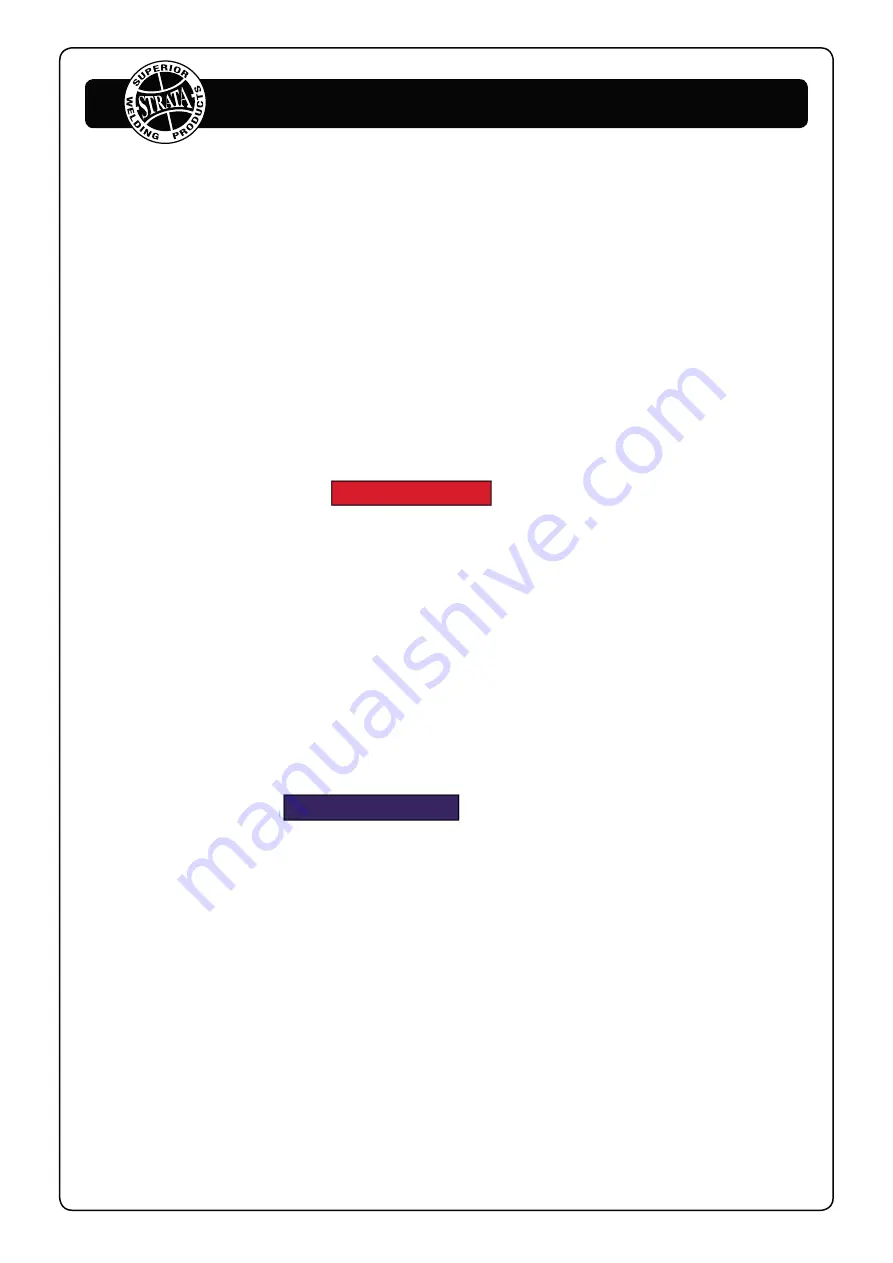
3.3.5 Tungsten Electrodes
Tungsten is a rare metallic element used for manufacturing TIG welding electrodes. The TIG
process relies on tungsten’s hardness and high-temperature resistance to carry the welding current
to the arc. Tungsten has the highest melting point of any metal, 3,410 degrees Celsius. Tungsten
electrodes are nonconsumable and come in a variety of sizes, they are made from pure tungsten or
an alloy of tungsten and other rare earth elements. Choosing the correct tungsten depends on the
material being welded, amps required and whether you are using AC or DC welding current.
Tungsten electrodes are colour-coded at the end for easy identification. Below are the most
commonly used tungsten electrodes found in the New Zealand and Australian market.
Thoriated (Colour Code: Red)
Thoriated tungsten electrodes (AWS classification EWTh-2) contain a minimum of 97.30 percent
tungsten and 1.70 to 2.20percent thorium and are called 2 percent thoriated. They are the most
commonly used electrodes today and are preferred for their longevity and ease of use.
Thoriated tungsten should not get in contact with open cuts or wounds. The more significant
danger to welders can occur when thorium oxide gets into the lungs. This can happen from the
exposure to vapours during welding or from ingestion of material/dust in the grinding of the
tungsten. Follow the manufacturer’s warnings, instructions, and the Material Safety Data Sheet
(MSDS) for its use.
E3
(Color Code: Purple)
E3 tungsten electrodes (AWS classification EWG) contain a minimum of 98% percent tungsten
and up to 1.5 percent Lanthanum and small percentages of Zirconium and Yttrium they are
called E3 Tungsten. E3 Tungsten Electrodes provide conductivity similar to that of thoriated
electrodes. Typically, this means that E3 Tungsten Electrodes are exchangeable with thoriated
electrodes without requiring significant welding process changes. E3 deliver superior arc starting,
electrode lifetime, and overall cost-effectivenes. When E3 Tungsten Electrodes are compared with
2% thoriated tungsten, E3 requires fewer re-grinds and provides a longer overall lifetime. Tests
have shown that ignition delay with E3 Tungsten Electrodes actually improves over time, while 2%
thoriated tungsten starts to deteriorate after only 25 starts. At equivalent energy output, E3
52
www.strata.co.nz
ADVANCEMIG 255C
















































